Geirangerfjord is one of Norway’s most famous fjords. Along with Nærøyfjord, Geirangerfjord comprises a UNESCO World Heritage Site of the West Norwegian Fjords. Situated in the Sunnmøre region of Møre in Romsdal county, this fjord is centered around the small village of Geiranger. Surrounded by rural farmland, steep mountains, and dotted with waterfalls, it’s no wonder this is a popular place to visit.
Disclaimer: This post contains affiliate links. This means that should you click on certain links, and then subsequently purchase a product, I will receive a small commission.
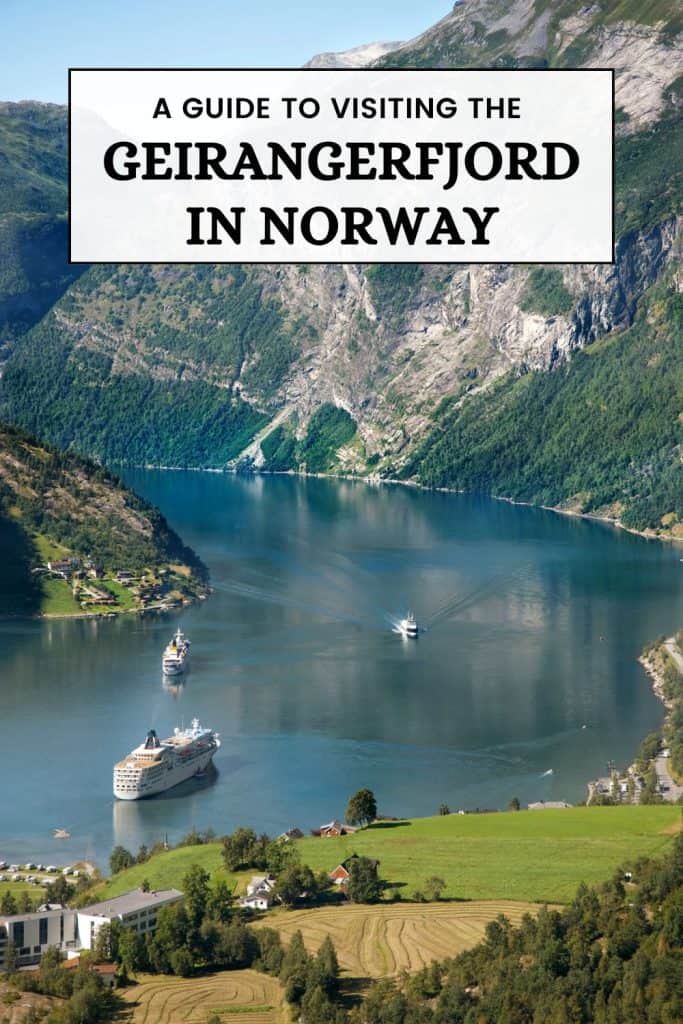
Table of Contents
What you need to know about Geirangerfjord
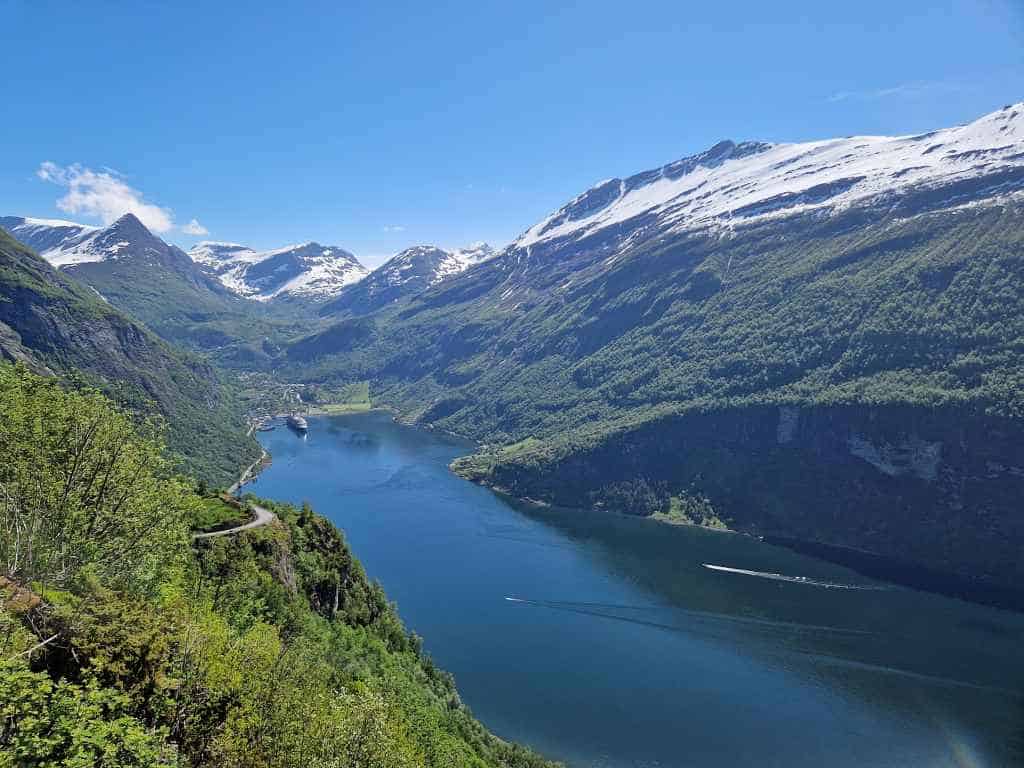
The fjord is a 15-kilometer-long tributary of a branch of a “parent” fjord called Storfjorden (the Great Fjord). Despite being relatively small, this impressive waterway reaches up to 260 meters in depth and, at its widest point, measures 1.5 kilometers across. This spectacular natural landscape was carved out over the ages by glaciers, creating this stark, sparkling canyon between mountains that soar up to 1,600 meters into the sky.
Needless to say, this dramatic landscape and its deep blue body of water offer up a range of different activities. Visitors can spend a trip here leisurely cruising the waterway, relaxing in rural farm stays, or hiking among the snow-capped peaks of the mountains; there’s something for everybody.
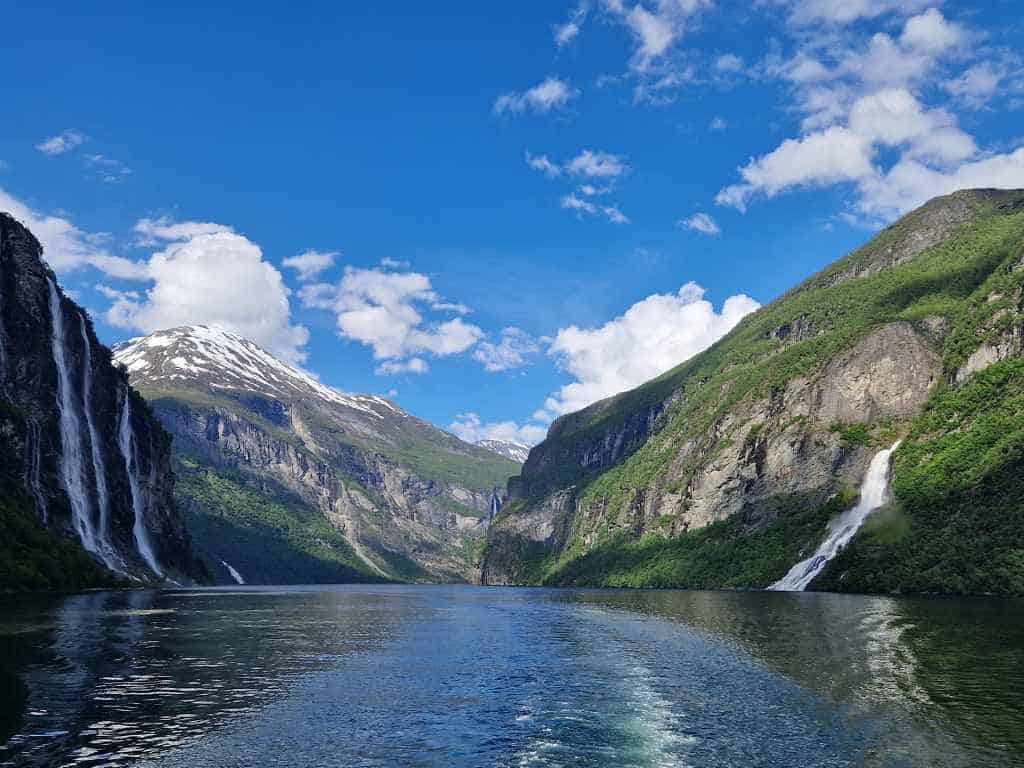
Things to do at Geirangerfjord
There is a multitude of activities to get up to when it comes to visiting Geirangerfjord. Depending on the time of year you’re visiting, you may be skiing nearby or sunning yourself on the deck of a boat. This spectacular fjord, almost untouched by modern development, is a tranquil landscape primed for exploration.
Visit the Waterfalls
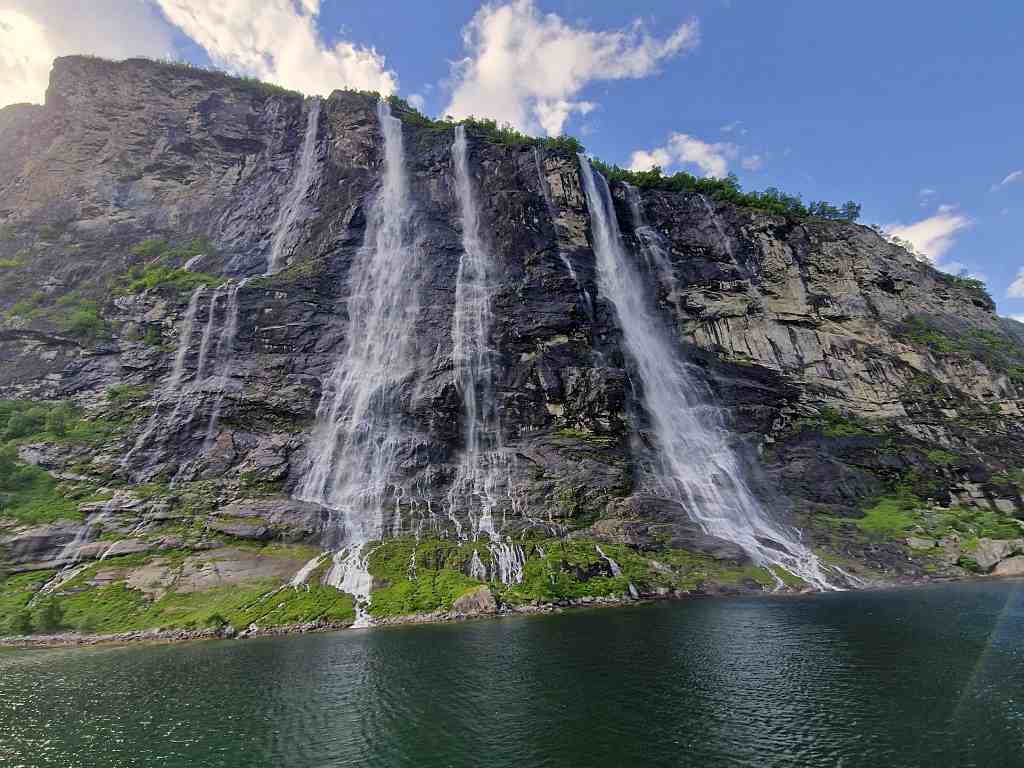
The steep sides of the mountains that plunge down to the depths of the fjord provide the perfect conditions for creating some stunning waterfalls. Many of these waterfalls can be visited on a trip to Geirangerfjord.
One option to see them is to hike. You can take the Waterfall Trail, which starts alongside the Storfossen (Great Falls) and leads up over 300 steps to viewing platforms and the Fjord Center, where you can learn more about the landscape.
More waterfalls abound, such as de Syv Systre (the Seven Sisters) – a collection of cascades – and the Friaren (the Suitor) waterfall nearby. There’s also the Brudesløret (Bridal Veil) waterfall which, as you can tell from the name, looks like a bride’s veil clinging to the mountain.
Take a Cruise
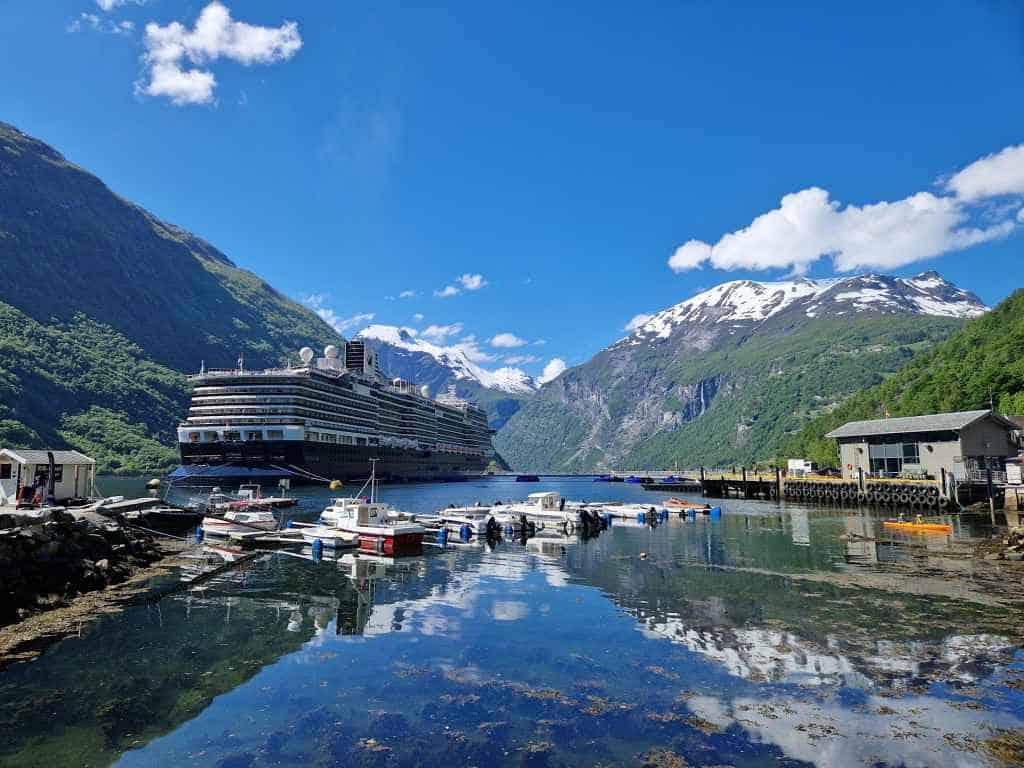
If you’re visiting Geirangerfjord, arguably the best way to experience the majesty of the landscape is by taking a boat trip on the fjord itself and seeing the sheer scale of it all from the water. Exploring by boat gives visitors a chance to take in the enormity of the fjord and enables you to get up close and personal with certain sights.
Cruises pass by the famous waterfalls, floating alongside the extremely steep sides of mountains that line the fjord. Here, you’ll also be able to glimpse abandoned farms from ages gone by scattered on the hillsides. Cruises on Geirangerfjord usually take place during the summer months. They last between 60 and 90 minutes.
Go Hiking
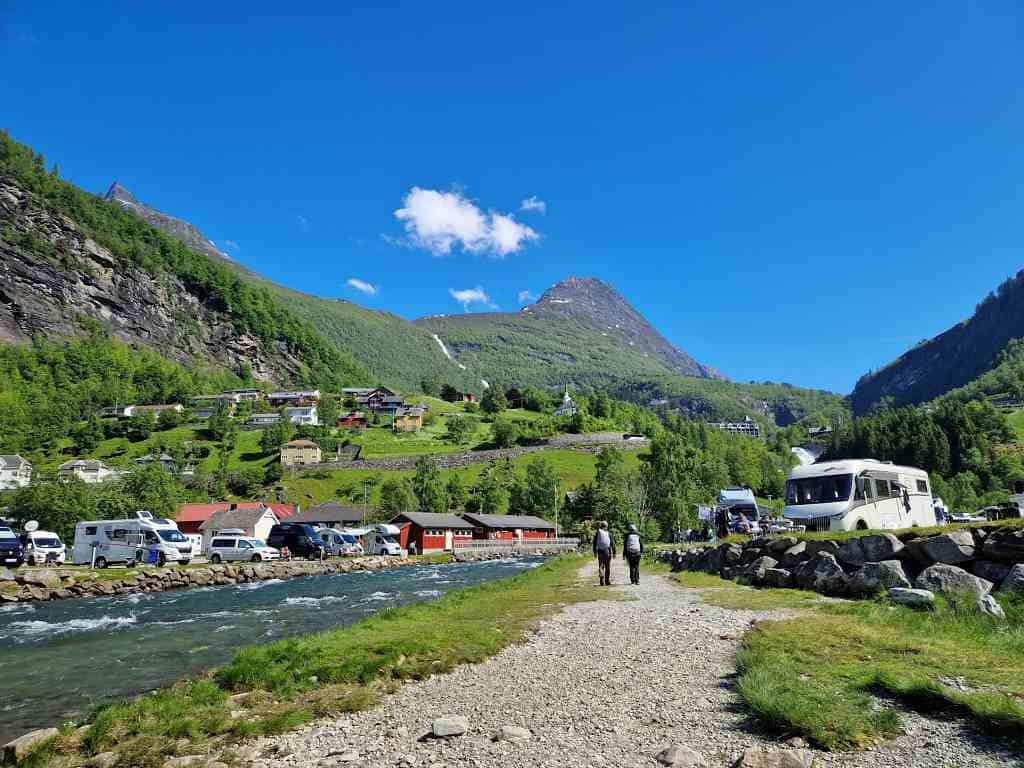
With all that mountainous landscape, there’s no wonder that keen hikers will enjoy the chance to immerse themselves in the dramatic nature surrounding Geirangerfjord. In the summer months, the landscape comes to life with wildflowers and green trees, with trails popular with locals crisscrossing through it all.
One particularly attractive hiking option is to visit Skageflå, an old abandoned farm surrounded by former pastureland. Now fully restored, the farm provides the perfect jumping-off point for hiking in this part of Geirangerfjord, with spectacular scenery to take in on the way as you hike around 200 meters above the water.
Head up to a viewpoint
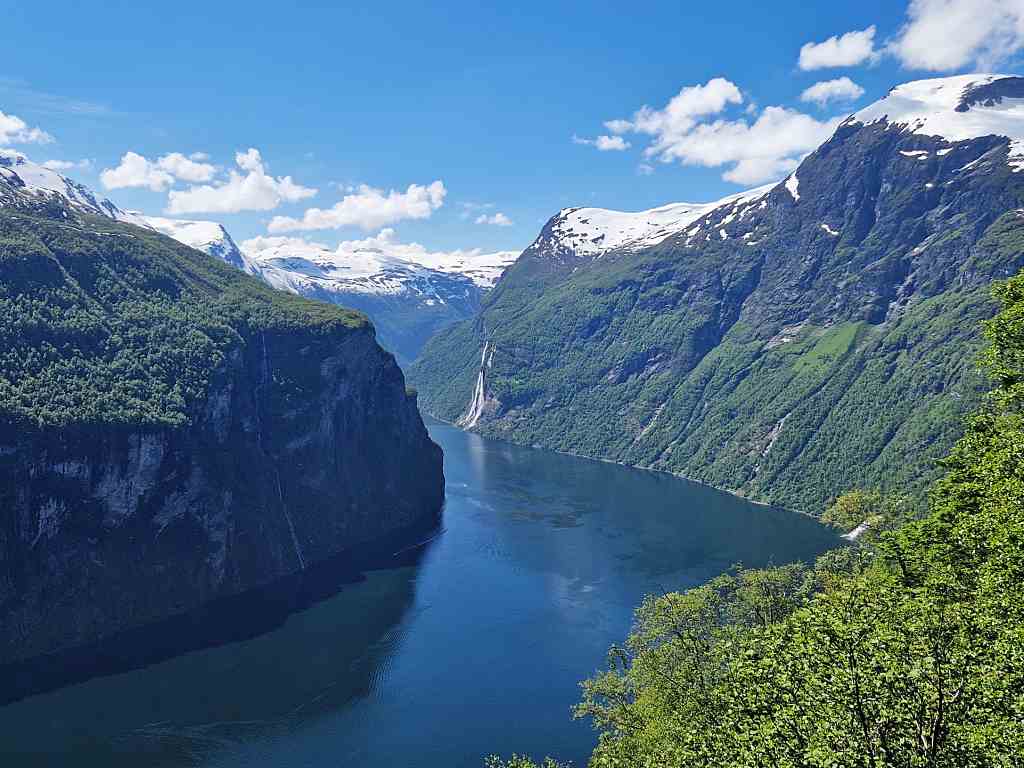
Those soaring mountains taking up space on either side of the fjord mean that there is ample opportunity to see Geirangerfjord from up high. Thankfully, there are many well-established and lesser-known viewpoints where you can marvel at the scenes below.
One of these is Flydalsjuvet. Located just above the town of Geiranger, this viewpoint is accessible via road and hiking trails. There’s also a seat on the mountain’s edge here – an ideal photo opportunity. There’s also Ørnevegen (Eagle Road), a mountain route that twists and turns its way up to a famous viewing platform with a stunning vista of Geirangerfjord below.
You may also want to visit the Geiranger Skywalk Dalsnibba. Situated 1,500 meters above sea level, this man-made balcony – accessible via the Nibbevegen toll road – sits up on a rocky promontory, providing visitors with the highest view of a fjord anywhere in Europe.
Take a walk around the town
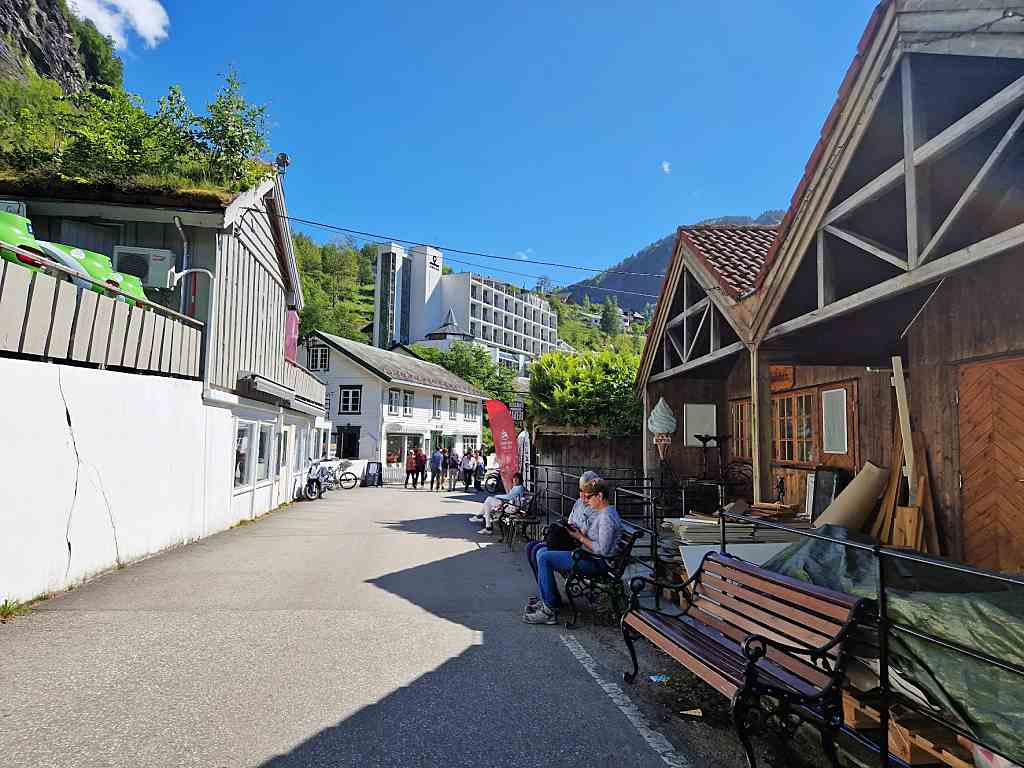
The town of Geiranger itself is a charming spot to spend an afternoon exploring. The waterside village, a community, shaped by its position in the middle of a remote fjord valley, provides an interesting insight into the history of a region.
With only 250 permanent residents, it’s a charming place to find yourself; streets are lined with wooden buildings and old boathouses and make for a colorful contrast to the natural landscape that surrounds it. Geiranger is also the natural jumping-off point for boat trips into the fjord; in fact, it’s the third-busiest cruise ship port in the country.
Where to eat in Geirangerfjord
If you’re in Geirangerfjord for the day, chances are you’ll need to find somewhere to eat. There are several local eateries situated both in the main town and around the hillsides surrounding the fjord.
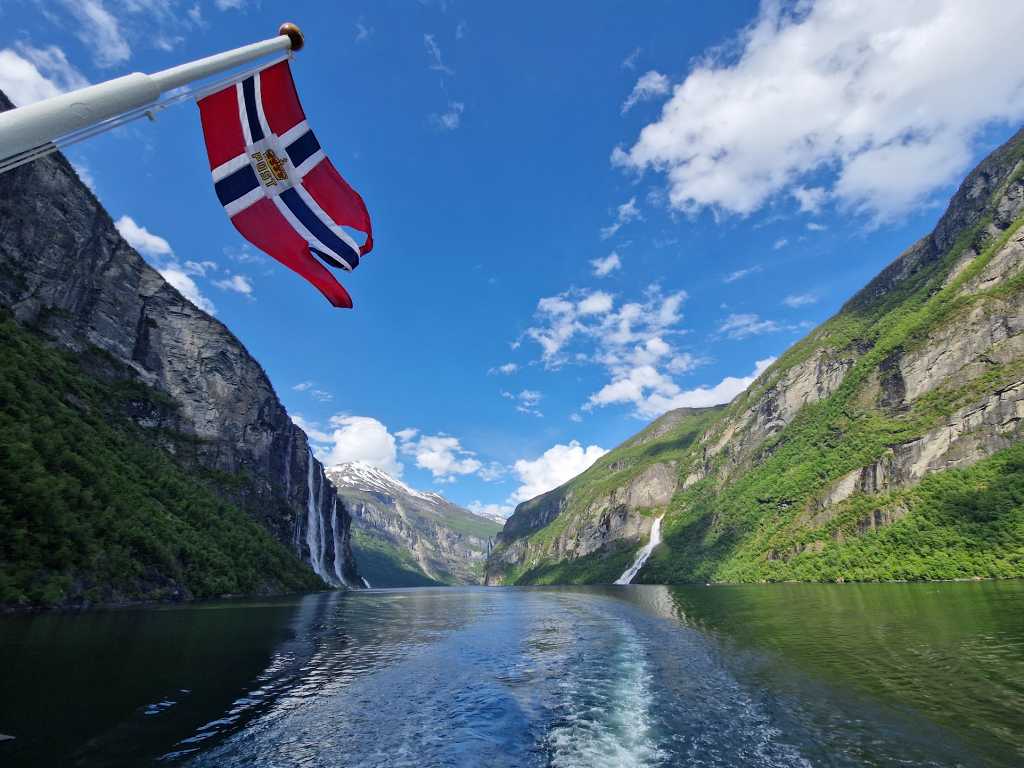
Naustkroa
This charming little restaurant is located in Geiranger. It serves up a selection of delicious dishes in a beautiful waterfront setting. A particular favorite here is pizza, but you can also sample Norwegian specialties.
Café Olé
Also situated in Geiranger, this central eatery is a contemporary spot for coffee and a quick bite to eat. Set on a pedestrianized street and complete with its very own sunny terrace, this cafe is a great place to watch the world go by while you sip a coffee. On Fridays, they serve beer and wine for their “Friday Night Disco.”
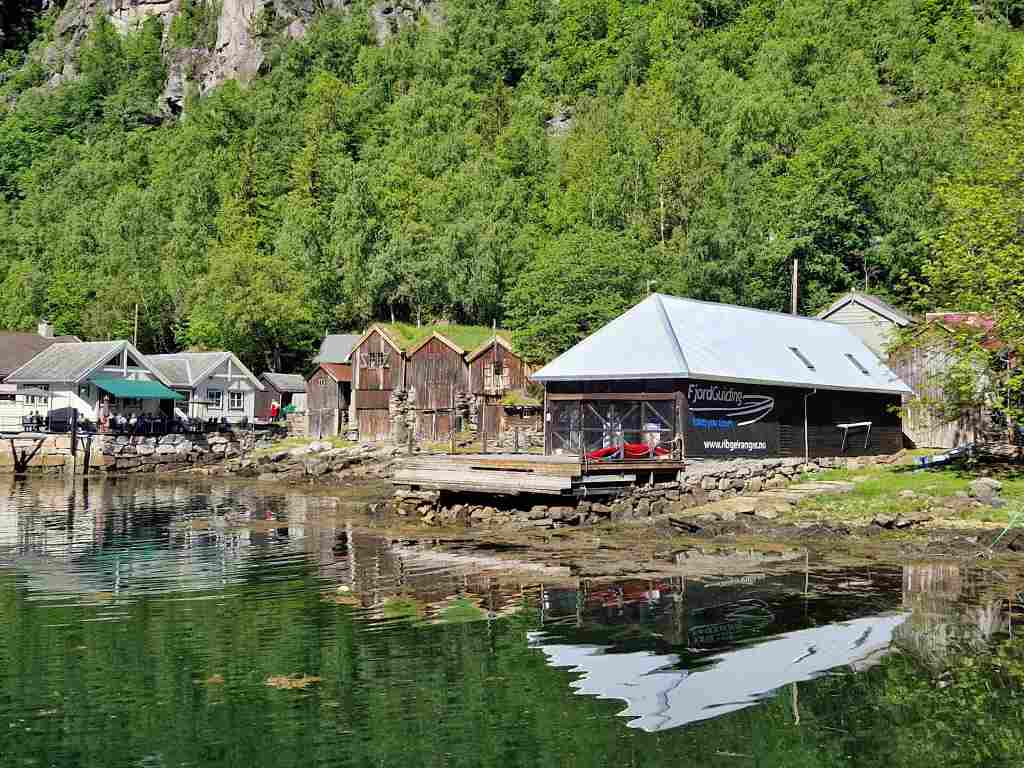
Westerås Farm
Situated inside a building dating back to 1603, Westerås Farm, this eatery provides high-end dining in a rustic environment. The restaurant, once part of a farm, has some incredible views of waterfalls and the surrounding fjord landscapes.
Djupvasshytta
Djupvasshytta is an ideal stop if you’re exploring the area by car. Located 1,030 meters above sea level, near the turn-off for the Dalsnibba viewpoint, this is a family-owned establishment that serves up dishes made from locally sourced ingredients.
Where to stay in Geirangerfjord
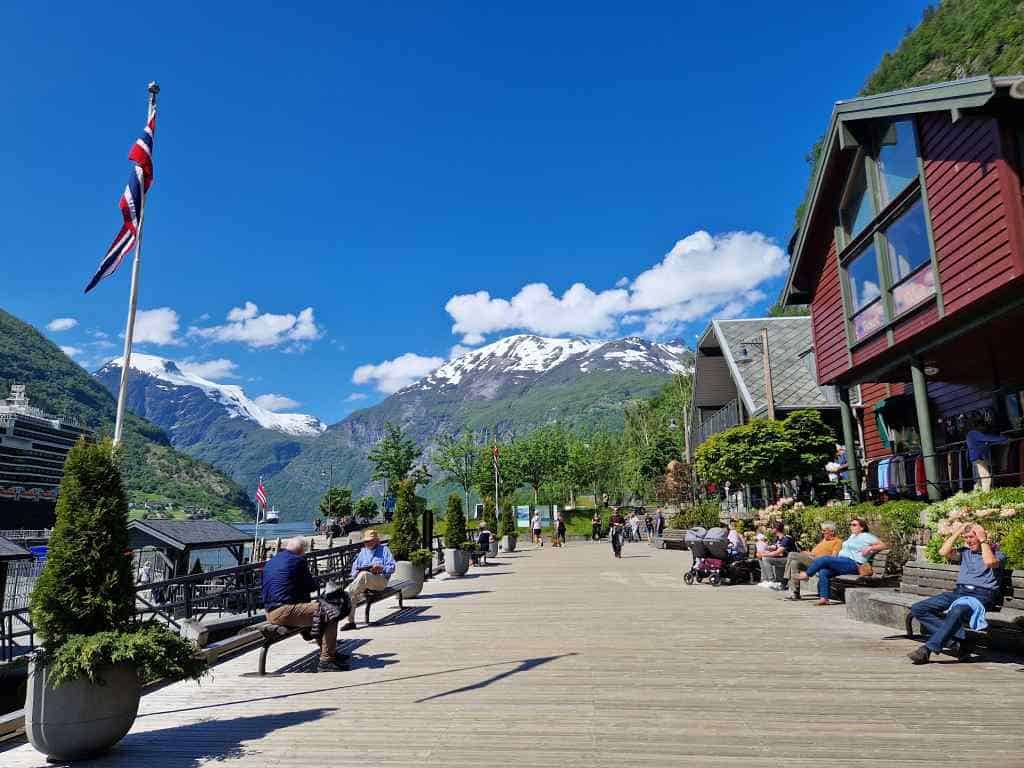
There are various choices to opt for if you want to stay a night or two in Geirangerfjord. These options range all way from high-end luxury to more affordable options. Note, however, that many are only open during the summer season; make sure to book as early as possible, too.
Luxury – Hotel Union Geiranger Bad & Spa: Those looking for a sumptuous stay in Geirangerfjord should look no further than this property. A spa hotel situated in the village of Geiranger itself, this accommodation option boasts clean and contemporary rooms with views across the fjord. Guests can also enjoy full use of swimming pools, spa facilities, and an onsite restaurant. Click here for more information and to check the latest prices.
Mid-range – Havila Hotel Geiranger: This modern hotel, also situated in Geiranger, provides good value for the money, and it’s a fantastic place to stay if you’re exploring the fjords. Located just five minutes walk from the dock area, rooms at this hotel are large and feature stunning fjord views. Elsewhere, the hotel’s two restaurants also have fantastic views and serve up a variety of delicious dishes. Click here for more information and to check the latest prices.
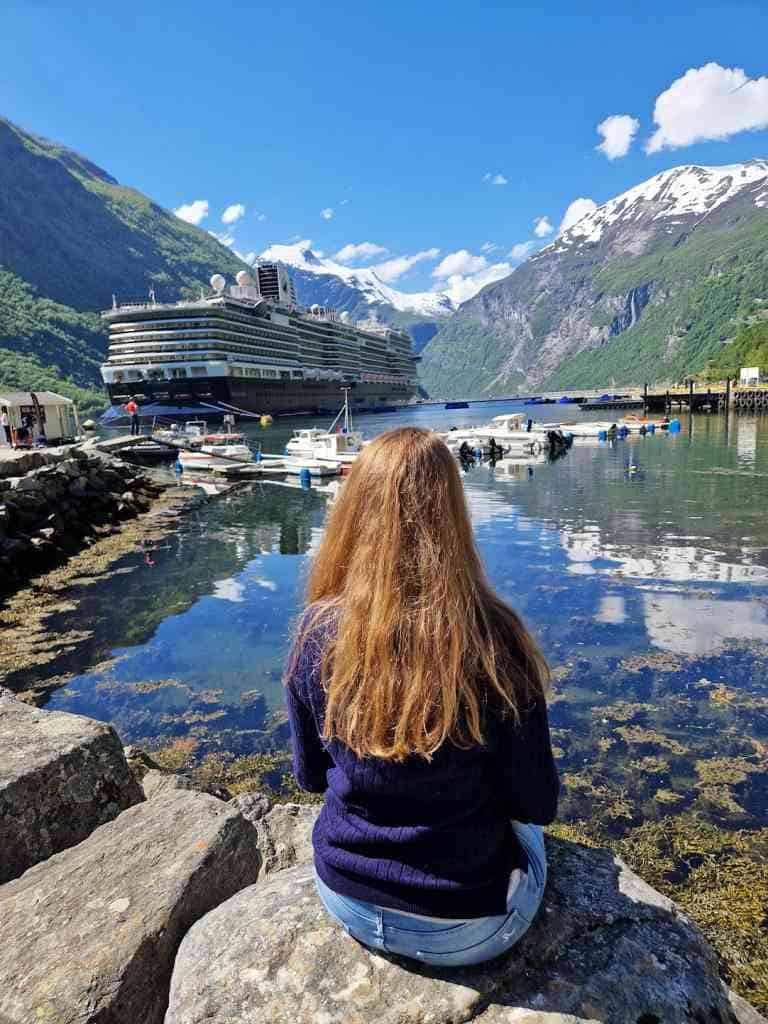
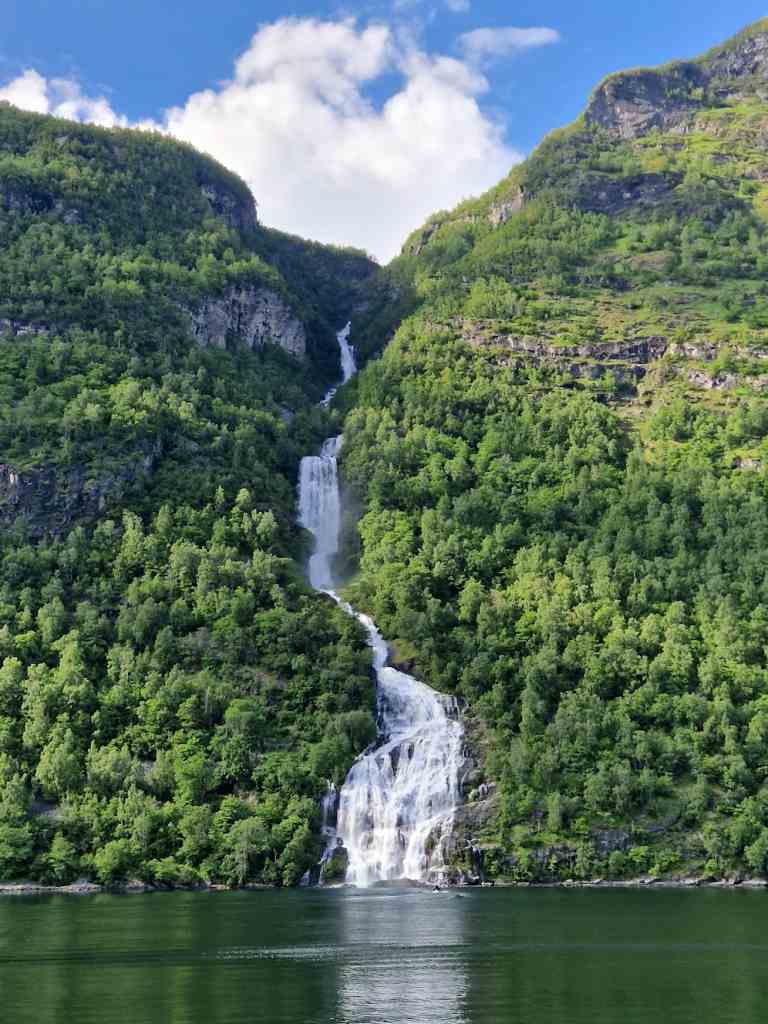
Budget – Hjelledalen Hyttesenter: If you’re looking for a down-to-earth, rustic experience, then Hjelledalen Hyttesenter is a great option. The property consists of several wooden cabins, complete with private kitchens, wood-burning stoves, and laundry facilities. Staying here means being surrounded by the natural scenery of the fjord, making it a great location for exploring further afield. Click here for more information and to check the latest prices.
How to get to Geirangerfjord
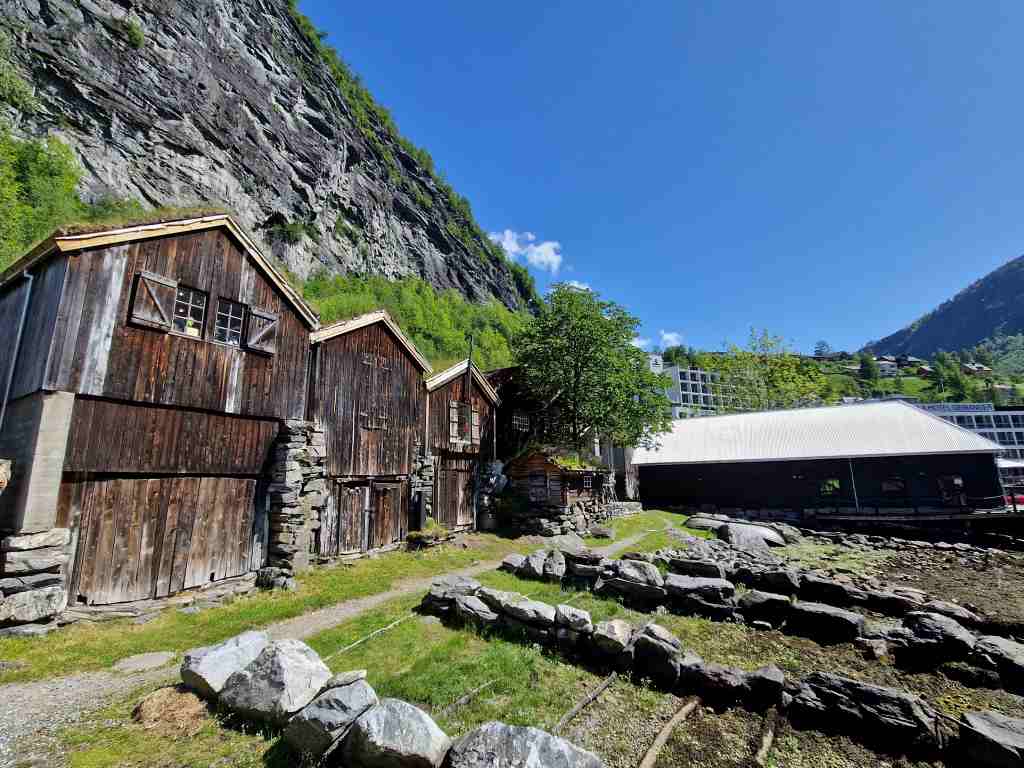
By Boat: If you want to arrive in the village of Geiranger by boat, seeing the fjord as you sail in, you’ll be pleased to know that this is doable. Cruises connect a number of major towns and cities in Norway. One option is to take a cruise from Oslo to Geiranger; duration and prices vary, as do the stops the boats make.
By Car: Traveling around Geirangerfjord is probably the best way to experience the area at your own pace. From Oslo, it takes around seven hours to reach Geiranger, so you’ll need to be prepared for a lot of driving. There are plenty of opportunities to see some amazing sights and get off the main tourist trail if you drive.
By Air: There are no direct flights to Geiranger. The nearest airport is Ålesund International Airport, which is around 120 kilometers away from Geirangerfjord. After flying here from Oslo, it’s best to pick up a rental car and drive the picturesque route, which takes around two and a half hours along the fjords.
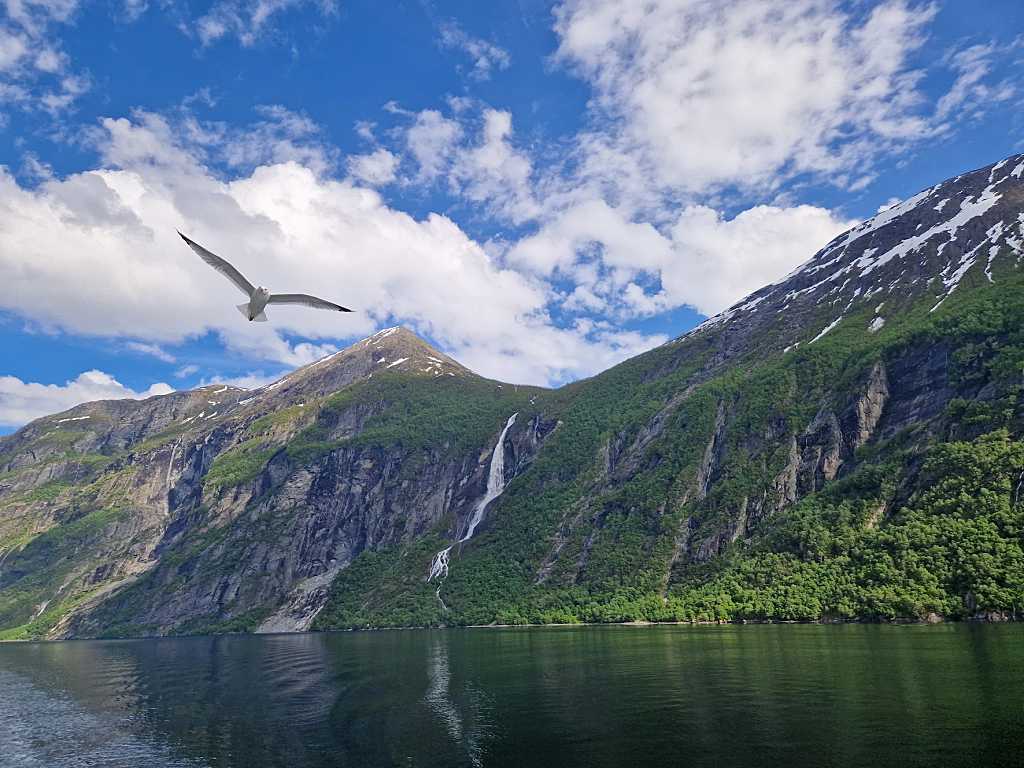
Having a car is an excellent option as it means you can travel at your own pace and stop to admire the country’s incredible scenery whenever you want. The roads in Norway are in good condition, although you may want to avoid driving in winter unless you’re used to driving in harsh conditions.
Geirangerfjord’s nearest airport and train station are around 120 kilometers and 130 kilometers away, respectively, so it’s best to reach the area by car.
